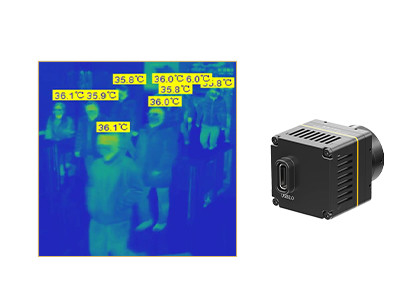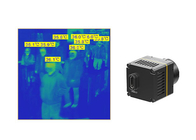-
Thermal Camera Core
-
Thermal Security Camera
-
Drone Thermal Camera
-
EO IR Systems
-
Thermal Imaging Binoculars
-
Infrared Thermal Camera Module
-
High Resolution Thermal Camera Module
-
Cooled Infrared Detectors
-
Optical Gas Imaging
-
Thermal Camera For Fever Detection
-
Cooled Camera Modules
-
Vehicle Mounted Thermal Camera
-
Integrated Dewar Cooler Assembly
-
Uncooled Infrared Detectors
384x288 17μM Thermal Imaging Camera For Non Invasive Early Disease Diagnosis

Contact me for free samples and coupons.
Whatsapp:0086 18588475571
Wechat: 0086 18588475571
Skype: sales10@aixton.com
If you have any concern, we provide 24-hour online help.
x| Resolution | 384x288 | Power Consumption | 0.85W |
|---|---|---|---|
| Spectral Range | 8~14μm | Pixel Pitch | 17μm |
| Typical NETD | <50mk | Frame Rate | 25Hz |
| Highlight | 384x288 Thermal Imaging Camera,17uM Thermal Imaging Camera,Non Invasive Thermal Camera |
||
384x288/17μM Thermal Imaging Camera For Non-Invasive Early Disease Diagnosis
iHA417W thermal module is specially developed for medical diagnosis. The captured temperature data and heat distribution of target can be used to achieve radiation-free, non-invasive early disease diagnosis and long-distance, large-scale body temperature screening.
It is mainly composed of wafer-level-packaging 384×288/17μm infrared detector, optical lens and SDK for temperature measurement with accuracy up to ±0.5℃.
Without external black body, the iHA417W thermal imaging module has a compact & light structure, which guarantees a lower integration cost. It has two modes of detect distance: 0.5m (for medical diagnosis) and 5m (for epidemic prevention and animal thermography).
iHA417W thermal camera module has an all-in-one standard Type-C interface with power supply, data transmission and control, customers can quickly develop and integrate various temperature measuring systems like medical diagnosis and epidemic prevention.
- Small Size: 25.4mm×25.4mm×30.3mm (with lens)
- Typical NETD<50mk
- Detect Distance: 0.5m/5m
- Light Weight as Low as 32.2g
- Superior Temperature Measurement Accuracy: ±0.5℃
| Model | iHA417W |
| IR Detector Performance | |
| Resolution | 384×288 |
| Pixel Size | 17μm |
| Spectral Range | 8~14μm |
| Typical NETD | <50mk |
| Image Processing | |
| Frame Rate | 25Hz |
| Start-up Time | 5s |
| Digital Video | RAW/YUV |
| Image Display | Black Hot/White Hot/Pseudo Color |
| Image Algorithm | NUC/3DNR/DNS/DRC/EE/SFFC |
| Electrical Specification | |
| Standard External Interface | Type-C |
| Communication Mode | USB |
| Supply Voltage | 5±0.5V |
| Typical Power Consumption | 0.85W |
| Temperature Measurement | |
| Operating Temperature Range | -10°C ~ +50°C |
| Temperature Measurement Range | 15℃ ~ 50℃ |
| Temperature Measurement Accuracy | ≤±0.5℃ (No wind indoor, target temperature range 32℃~42℃) |
| Measuring Distance | Two Modes: 0.5m or 5m |
| SDK | Support Windows/Android/Linux SDK, Achieve Full Screen Thermography |
| Physical Characteristics | |
| Size (mm) | ≤25.4×25.4×30.3 (With 9.1mm Lens) |
| Weight | 32.2±3g (With 9.1mm Lens) |
| Environmental Adaptability | |
| Operating Temperature | -40°C ~ +70°C |
| Storage Temperature | -45°C ~ +85°C |
| Humidity | 5%~95%, non-condensing |
| Vibration | Random Vibration 5.35grms, 3 Axis |
| Shock | Half-sine Wave, 40g/11ms, 3 Axis 6 Direction |
| Optics | |
| Optional Lens | Fixed Focus Athermal: 9.1mm |
| Certificate | |
| Standard | ROHS/REACH |
![]()
The iHA417 thermal module is expected to be widely used in the fields of Disease Screening, Traditional Chinese Medicine Physiotherapy, Health Check-up, Rehabilitation etc. at present and in the future.
![]()
![]()
1.What is the difference between low light, active IR and thermal imaging?
Low light needs natural light and transforms weak natural light image into enhanced electronic image through image intensifier;
Active IR actively emits infrared light and uses infrared beam reflected by the target. It has very poor concealment;
Thermal imaging doesn’t need any light and is a passive infrared night vision that detects infrared radiation difference between targets and scene or different parts of an object. not be affected by the changes of the surrounding lighting conditions, during night or even in fog, rain and other harsh environments.
2. Can you block thermal imaging?
In most cases, you cannot. But infrared rays can't penetrate walls, and also the glass can block IR. So, if you don’t want to be detected, you can conceal behind glass or walls to block the thermal imaging.




